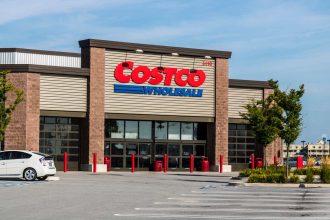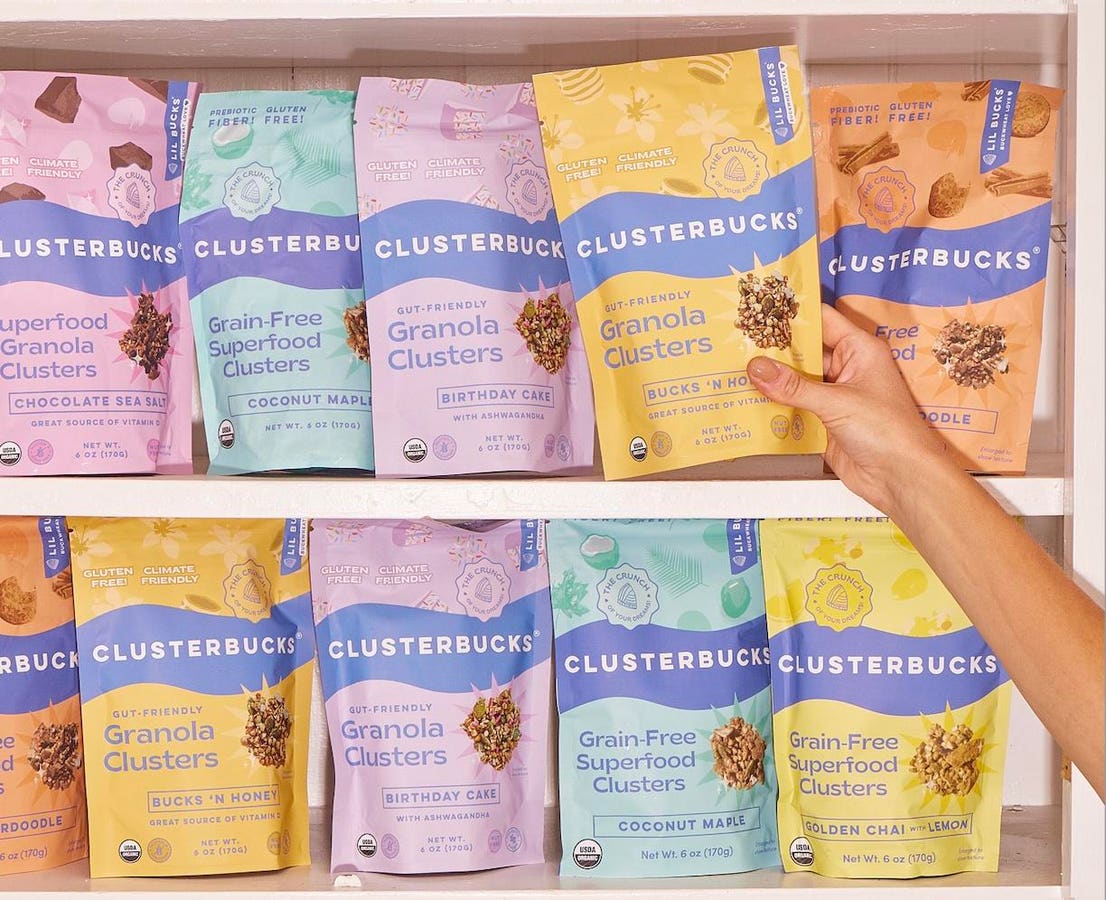When we ponder the causes of our changing climate, we often point to carbon emissions and shake our heads at big corporations. In addition to looking up, there could be solutions when pointing our heads down at the earth too.
More specifically, we can look at our soil, the bedrock of regenerative farming, and consider its overlooked abilities in transforming our food systems. Farmers who practice regenerative farming believe it could actually make a dent in reversing the rate of climate disasters largely due to the soil’s ability to store water and carbon. Unfortunately it’s unlikely to be widely implemented any time soon, if ever. That’s not to say it’s not a responsible way to farm.
Buckwheat is one crop that has the ability to help sustain many regenerative organic farms. Despite its ancient history in a variety of global foods like Japanese soba, Korean nurungji, and Jewish kasha varnishkes, buckwheat’s presence in American supermarkets has been rare at best. So it really took someone with a background and genuine calling like Emily Griffith to educate the consumer and market such an elusive ingredient successfully.
It led her to create ’Lil Bucks, a brand that celebrates the wonder of buckwheat, both as the immensely beneficial crop and a healthy fruit seed with an addicting crunch. Griffith has reimagined buckwheat as a commercial staple, both in the form of sprouted seeds that add that texture to a parfait or salad, and in her perky line of snacks too appropriately dubbed Clusterbucks. Each individual ingredient in the product is sourced with radical intention focused on regenerative agriculture. The relationships she has cultivated with farmers and retailers has created a new supply chain of regenerative organic certified buckwheat. “Sometimes doing things the authentic, wholesome way is the hard way,” Griffith tells me. “But it’s definitely worth it now.”
Sprouting A Buckwheat Brand
While living in Sydney, Australia, Griffith would often go out for acai bowls, where she came across the most fabulously crunchy topping she had never seen presented in this form. In addition to “that crunch,” as she puts it, she was blown away by the nutrition packed inside the buckwheat. “It’s gluten- and grain-free and could be a complete amino acid protein…a prebiotic fiber…and good for heart health and regulating blood sugar,” Griffith explains.
Back home in the States, she continued to immerse herself in the world of buckwheat and her fascination with the fruit seed grew, realizing its environmental virtues too. “It helps the soil not get dried out by the sun,” she came to learn. “It’s attracting pollinators and beneficial insects that keep more nutrients on the field and in the soil.”
Preparing raw buckwheat for consumption is far from simple. In order to create a product reminiscent of those acai bowl toppers, she would buy it in bulk and begin the laborious sprouting process. “[My husband and I] would be picking out tiny black seeds…come back eight hours later and do all this crazy rinsing…then dehydrate them,” she says.
‘Lil Bucks finally launched in 2018 at Chicago farmers markets. “The packaging was horrible,” Griffith remembers. “It was a brown bag and then there was a circle sticker with ‘Lil Bucks.” It worked as a farmers market brand, but she still had a much larger vision of reimagining our food system that would begin the moment a shopper’s eye glanced at her product.
Buck Yes!
In March of 2020, ‘Lil Bucks sprouted buckwheat toppers entered Whole Foods Market stores across the Midwest after closing a $250,000 seed round. Griffith’s experience in the advertising industry didn’t provide the skills traditionally touted to become a CPG founder, but it became an invaluable asset. She knew educating modern consumers would be the most important factor to get them to give a buckwheat-based product a chance, which at first began by sampling the product relentlessly. But that infamous month could not have made for worse timing. “How are we going to get mass market appeal?” she remembers thinking. “We have to have something that will move off the shelf without me standing there telling people what it is.”
That’s when she birthed Clusterbucks, the crunchy buckwheat-based snack that you can eat on its own or use like granola. Griffith could now expand her consumer base and present buckwheat in a way that resembled something more familiar. The superfood snack comes in a line of flavors including Snickerdoodle, Bucks ‘n Honey, Chocolate Sea Salt, Birthday Cake and Blueberry Crisp. “We’re literally competing against products backed by Kellogg’s and we have the same billboard essentially to compete,” she says. The whimsical, matte pastel packaging, designed by Griffith herself, draws shoppers in and speaks to a younger audience and a new age of conscious shoppers bored of cliché papyrus font to symbolize sustainability.
The company does not source its ingredients through manufacturers. There’s no limit to where Griffith would go to find the most earth-conscious ingredients for her products. The coconut sugar, for example, in Clusterbucks is sourced from the Regenerative Organic Certified Big Tree Farms in Indonesia. And when she began scaling nationally, she started calling American farmers who could grow as much buckwheat as possible for her. That’s when she connected with Minnesota farmer, Luke Peterson.
Buckwheat’s Role On A Regenerative Organic Farm
“There’s a strategic way of growing buckwheat in the rotation at specific times that eliminates the need for synthetic fertilizers and chemicals,” Peterson tells me. He’s the sole farmer at his 1,400-acre Luke Peterson Farms in Dawson, Minnesota, one of only a handful of farms in the Midwest that’s Regenerative Organic Certified.
“Regenerative” can have broad implications and is increasingly over- and mis-used, but one of its primary meanings is that the farmer has created a system that prioritizes soil health. Not much can stop a brand from claiming to “support regenerative practices,” but just several dozen today have gained ROC certification from the Regenerative Organic Alliance (ROA). Many reasons a brand may not gain the certification are logistical, but they also may not meet the high standards of regenerative ingredients in the product. “It has to be at least 95% regenerative organic certified ingredients on top of already being organic certified,” Griffith says. The collaborative pillars of regenerative organic farming, described by the ROA, include integrating cover crops (like buckwheat), rotating crops, limiting tillage, integrating livestock, adding compost and eliminating toxic chemicals.
Before meeting Griffith, Peterson, a first-generation farmer, was already growing buckwheat. He started growing it for another company but kept it going even when he stopped working with them for the sake of his regenerative farm. He intercrops sunflowers with buckwheat, which naturally competes with weeds, eliminating the need for synthetic chemicals. “It’s able to grow under the sunflower better than any other cover crop I’ve been able to find,” Peterson says. “[Buckwheat] is really tall, really bushy and it can collect a lot of sunlight, so the farm is storing sunlight like crazy,” Peterson explains.
Sunflowers are grown far apart, so, among other benefits, the buckwheat covers the exposed soil and adds a larger root system for nutrients to travel deeper into the earth, further enriching the soil. That’s also why Peterson includes kernza, known for its extremely long roots, in his crop rotation. When he’s not selling it, he feeds the kernza to his cattle, whose manure also contributes to the regenerative system.
Healthy soil also prevents excessive runoff. “One of the most important things that we are overlooking in agriculture is when it rains most of the water goes off the surface of the soil directly into the lakes,” Peterson explains. “In my opinion, there is no other place to store carbon than in the soil or living things,” he adds.
About one tenth of Luke Peterson Farms is now buckwheat just for ‘Lil Bucks. Fields of the bushy flowers grow as far as the eye can see–taking no more than three months to reach peak harvest, another key benefit. Buckwheat will keep growing until it’s harvested. It takes about five months from the time Peterson harvests it to land on retail shelves in the form of Clusterbucks. When ‘Lil Bucks launched, Griffith bought a few hundred pounds total of raw buckwheat. In 2024, she sourced about 200,000 pounds.
Forming a partnership with Griffith helped Peterson finally monetize off of his buckwheat again, giving him the resources to sustain this integral pillar in the regenerative system he created. In return, Griffith could continue her independent, American buckwheat sourcing. “We have a lot of crops that create a lot of value, but just not in terms of money, so when you do have a cash crop to sell, it has to subsidize the ecosystem services,” Peterson explains. “Emily and I have this mutually beneficial relationship where we each rely on each other and grow each other’s businesses. We need each other.”
Promoting Regenerative Organic Farming
Clusterbucks sitting on the shelf at Whole Foods (and nearly 2,000 other retail locations) is also a representation of the work of Peterson, who Whole Foods also supports directly. He recently began fostering a prairie strip to increase biodiversity at the farm, and in turn, its soil health. According to Nijia Zhou, Principal Climate Advisor at Whole Foods Market, Luke Peterson Farms is a part of the natural grocer’s prairie strip program, a partnership with non-profit Mad Agriculture, and helped fund this project at the farm. “Prairie strips sequester carbon and provide an insetting opportunity that meets Whole Foods Market’s goal of investing in carbon reduction projects while supporting farmers in our supply chain,” says Zhou. “The wildlife is thriving,” Peterson says about the new prairie strip. “The bugs…the worms… they’re crazy. And there are a lot of migratory birds that use it.”
Somehow Peterson is able to handle all this work himself, but acknowledges the intense maintenance as a major hurdle to get more farmers to transition to regenerative practices, which typically takes many years. He credits the lack of a market for buyers to buy raw products and the difficulty of insuring a regenerative farm as other hurdles.
It may take a farmer like Peterson, with relatively low risk, to take a bet on regenerative farming, whereas other farmers have different mindsets and objectives. “Our goal wasn’t profit. It was nutrient-dense food and building soil,” he says. “On a small scale, testing the nutrition of some buckwheat grown from Luke’s farm versus conventionally grown buckwheat had 36% more protein, 74% more antioxidants and 32% more magnesium,” Griffith adds.
It’s a slow but steady journey of helping conventional farms transition to regenerative. “[Luke] has served as this example of showing other brands what can happen when you partner directly with the brand,” Griffith says. “[Other farmers] have reached out to us and been like, hey, I’m interested in this too.” Farms in Montana, Idaho and Wisconsin that Griffith has since begun sourcing additional buckwheat from are now on the path to becoming ROC since partnering with her. “You’re investing in resources for generations to come…Industrial agriculture is really depleting the soil to potentially a point of no return.”
Shelf Space As A Billboard
Whole Foods Market is more than a place to buy groceries, but a gateway for consumers to discover new products. In order for consumers to discover a product, its merchants have to find it first to bring it to shelf. ‘Lil Bucks entered Whole Foods as part of its forager program, where teams scout local regions for emerging brands to begin a path of obtaining long-term shelf space. ‘Lil Bucks also recently became part of another initiative, Whole Foods’ Public Discovery pilot program, which showcases certain products on an endcap shelf alongside information about the product. It exemplifies the retailer’s commitment to not just give a product shelf space and see how it performs, but to actually push to drive sales to ultimately help fund regenerative agriculture.
Whole Foods Market currently carries more than 150 regenerative organic certified products. As of 2022, that even includes some of its own private label products, including Whole Foods Market Organic Dried Mango, Organic Red Lentils, and Organic French Green Lentils.
Buckwheat is a top food trend that Whole Foods capitalized on in 2024 and continues to grow. “[Products] like Bob’s Red Mill buckwheat pancakes are performing exceptionally well–triple-digit year-over-year in sales,” says Whitney Herrera, Principal Category Merchant for Functional Snacks at Whole Foods Market. “When we see that substantiated data with a growing trend, it’s a no-brainer for me as a merchant to say, ‘maybe we should investigate more snacking items with this ingredient.’ It’s kind of a win-win where we’re helping benefit American farmers but then we’re also bringing a trendy item that’s going to help grow the category.” Clusterbucks is now in the top eight brands in Whole Foods’ functional snacks category, according to Herrera. “And without Luke, this product wouldn’t be here.”
Herrera tells me that her priority is to get the Blueberry Crisp flavor of Clusterbucks, more so than other flavors, in each store because that is the only ROC product on the Clusterbucks lineup, so it helps advertise regenerative agriculture. Because Griffith sources each ingredient individually, other varieties have not been able to be certified by the ROA just yet. Gaining the ROC certification on a product that’s not completely a raw crop, like rice or coffee beans, is particularly impressive, even just for the one variety. “We’re probably one of the highest ingredient products to have anything ROC,” Griffith says. There are many other ingredients like maple syrup and sunflower seeds, all of which need to be examined for ROC certification, an example of the tedious but necessary logistics.
‘Lil Bucks, Luke Peterson Farms and Whole Foods Market have each united as a team to optimize what each brings to the table. It reflects an actual manifestation of ‘farm to table.’ They’re each setting an example–and other farms, brands and retailers are following. Transitioning to regenerative farming can sound daunting, but as Griffith puts it, “we’re showing that it can be done.”
Read the full article here





